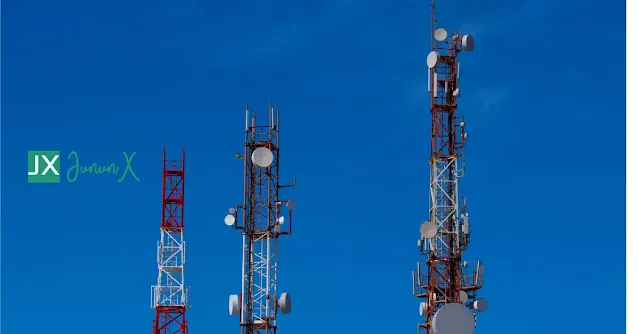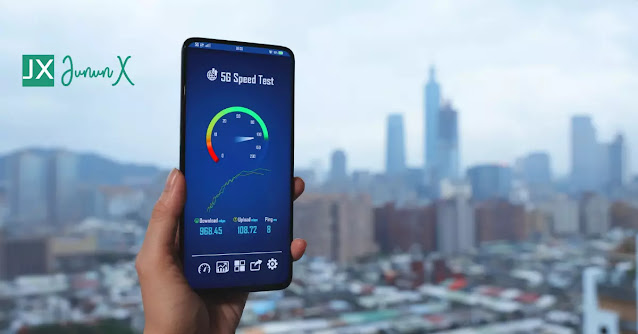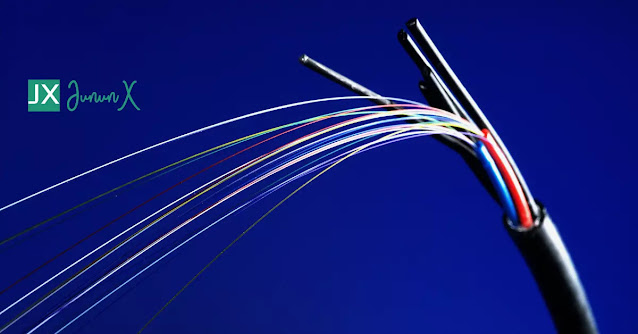Communication is an essential part of our lives. Whether we’re talking about the digital world or not, we all rely on some form of communication to connect with others and to access information.
Cell phone towers and fiber optic services are integral parts of the infrastructure that allows us to do just that. These two telecommunications infrastructure types provide the backbone for the digital age.
We depend on them for everything from communicating with family, friends, and businesses, and they offer reliable and robust connections across long distances. Here are some reasons why cell tower and fiber optic services are important for us.
01We depend on cell towers and fiber optic services for everything for communication.
Cell phone towers and fiber optic services offer reliable connections across long distances, which is why they are essential in today’s world.
And, if you think about it, both of these services allow us to function as a society without constantly being tethered to a wall or a desktop. Cell towers make it possible for us to live life hands-free and remain constantly connected every day.
Fiber optics ensure that we have access to information everywhere we go – even if we can’t get online from where we are.
Mobile Network Operator redesign the network by adding Fiber Optic to their Cell-Towers
Currently, data internet usage is the dominant traffic on cellular networks; data traffic will be more dominating in the future. If a data packet does not fit into the packet's buffer, it is dropped, causing a delay in delivery or even complete loss of the information.
This problem is called buffering, which is the main cause of latency issues. The subscribers will complain because of the buffering and low-internet speed.
Redesigning with fiber optic to cell towers makes it possible to transmit data at higher speeds over longer distances than before while reducing losses to almost zero.
It also enables better integration of mobile and fixed broadband networks, thus paving the way for Gigabit and multi-gigabit mobile services.
So when the 5G technology becomes available, it will be ready to deliver higher capacity 5G mobile data connectivity. Mobile Network Operators must have adequate infrastructures in place and equipment upgrades must be completed on time.
Redundant Fiber optic cables on cell towers is a must
Network Planning Team of Mobile Network Operators, when designing the network always concerned about redundancy.
To ensure that a network is not faulty and reduce the required maintenance cost, redundancy planning is a must.
MNOs want the internet service to their subscribers always on. To avoid the possibility of network failure, MNOs will use 2 different cables with different routes of cables.
Maintenance and Operation of Fiber optic cables on cell towers
Field Operation Team should be available 24x7 to take care of the Fiber Optic Network.
This is a very important part of the network used by all telecommunication companies. It keeps in touch with each other to ensure they are not disconnected from their backbone network, so services to the subscribers are always on.
When you have a fiber-optic network, it is important to know that you will not have any downtime in your business or the services that you offer to your subscribers.
This means that you will not have to deal with any technical issues, errors, or interruptions every day, which can result in losing revenue.
What are the benefits of cell towers and fiber optic services?
Cellular subscribers benefit from cell tower fiber optic because it allows them to access high-speed internet services without having to install additional hardware or pay extra fees.
This is especially beneficial for people living in areas with limited access to broadband networks.
Cell towers use optical fiber to handle the increased load brought about by 4G. LTE, and it is still increasing with 5G. Cell phone towers and fiber optic services are critical components of the infrastructure that allows us to stay connected wherever we are.
The benefits of using a cell tower fiber-optic provider include the following:
- Faster speeds due to the increased bandwidth available.
- Greater reliability because there is no interference from other wireless devices or signal sources.
- More flexible service options because you can choose the type of network that best suits MNOs' needs.
How are cell towers and fiber optics make services better?
Cell towers and fiber optic services are essential for the digital age. But, these two types of telecommunications infrastructure can also be improved.
The other big thing to do is invest in innovation and research so all users can continue improving on current technology.
Ensure that our mobile service providers are investing in the future of telecommunications infrastructure, ensuring that their subscribers have access to better service in the long term.
Innovation and research will be especially significant as technologies change more rapidly. For instance, 5G networks are predicted to offer up to 10 times faster than 4G networks currently do!
That’s a huge difference, so cell towers and fiber optics systems might need a makeover sooner rather than later.
5G towers must use fiber optic cable
Subscribers of 5G can stream music and movies from their mobile phones, televisions, and laptops. It needs high-capacity transmission, and low latency can be achieved by using fiber optic cable. The internet will be faster and more reliable.
The wireless signal must travel through a fiber optic cable for maximum speed and reliability. Fiber optic cable is also much more secure than radio waves.
There will be millions of new households in the neighborhood where 5G towers are placed, so the signal must be strong enough to reach those households or business complexes.
Fiber optic cable easy to upgrade to the higher capacity
Mobile Network Operators utilize 2 cores to support a cell tower. If they need more, they can easily add another 2 cores to be activated. But what if they want to upgrade them to 6 cores or even 8 cores?
It can easily be done because of the availability of optical cables and its standard.
What is changing in the digital age?
Communication methods are changing. The traditional copper telephone lines that made up the backbone of communication networks are being replaced by wireless communication.
This change has led to an increase in cell phone towers and fiber optic services, which are now at the forefront of communication infrastructure.
Cell phone towers provide wireless communication for mobile phones over long distances, so they’ve become a key part of communication infrastructure in rural areas where copper wire is no longer an option.
Cell phone towers also allow communication between cellular devices without going through a wired connection.
Fiber optic cables, on the other hand, provide reliable connections across long distances and provide fast data transmission speeds between remote locations.
They’re especially useful in urban areas with high-density populations because they can spread bandwidth across vast distances more efficiently than copper wires.
Conclusion
Cell towers and fiber optic services are essential for the connected society of the 21st century. With new technology on the horizon, these services are more important than ever.
Cell towers and fiber optic services are responsible for the digital age, where the internet, mobile devices, and social media are accessed through our handsets. Without these services, even the most high-tech smartphone will be useless.
The importance of these services cannot be understated. Without cell towers and fiber optic services, there would be no digital age.
As final information, here's how the light transmits in the fiber optic cables. Full video check here.






